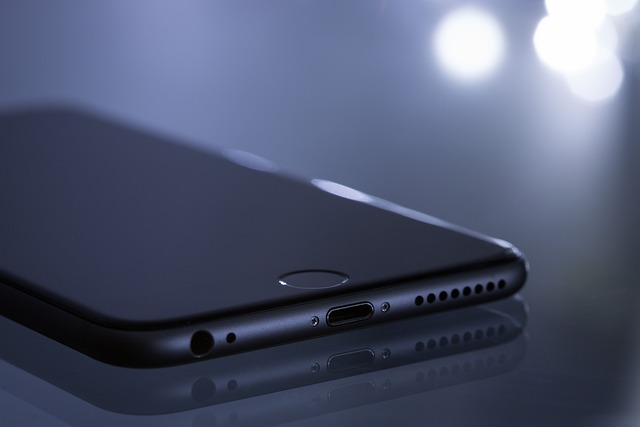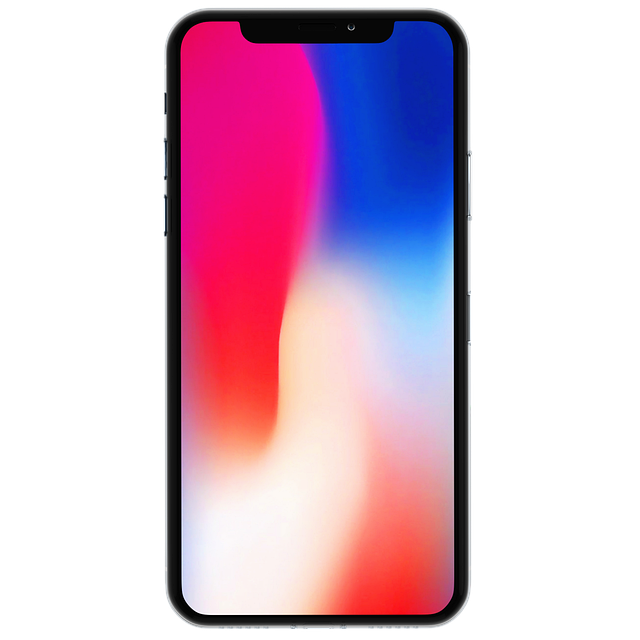To enhance your smartphone's battery life, particularly for iPhone users, it's recommended to understand your device's energy consumption patterns. OLED and AMOLED screens are more energy-efficient with dark content compared to LCDs. Replacing an aging iPhone battery can restore performance and is a cost-effective alternative to buying a new phone, especially since Apple's batteries maintain up to 80% capacity after 500 charge cycles. For extended battery health, avoid letting your smartphone discharge completely; keep it charged above 20%. Use the original charger and cable for safe and effective power transfer. Environmental factors can impact battery longevity, so keep your device in a cool environment. Strategic charging habits, such as keeping your charge between 40% and 80%, can prevent premature battery degradation. Regular software updates can also improve system functionality and power efficiency. When necessary, opt for a professional iPhone battery replacement to maintain peak performance without frequent charging interruptions. By adopting these practices, you can significantly extend your smartphone's battery life and avoid the need for regular replacements.
Effective management of smartphone power is a necessity in our tech-centric world. This comprehensive guide delves into the science behind your device’s energy usage and provides actionable tips to enhance charging efficiency and conserve power. From understanding your smartphone’s power needs to replacing an iPhone battery for optimal performance, learn how to make your charge last longer. We also cover essential maintenance practices and advanced techniques tailored for modern smartphones, ensuring you get the most out of every charge.
- Understanding Your Smartphone's Power Consumption: A Battery Life Primer
- Tips for Efficient Charging and Energy Conservation on Your Device
- Step-by-Step Guide to Replace iPhone Battery for Maximum Performance
- Optimizing App Usage to Prolong Your Phone's Battery Life
- Essential Maintenance Practices to Keep Your Smartphone's Power Pumping
- Advanced Techniques for Extending Battery Lifespan on Modern Smartphones
Understanding Your Smartphone's Power Consumption: A Battery Life Primer

To maximize the lifespan of your smartphone’s power, it’s crucial to have a comprehensive understanding of how your device consumes energy. A key factor in managing battery life is recognizing which applications and functions drain the most power. For instance, devices with OLED or AMOLED screens may consume less power when displaying dark content, as pixels can completely turn off. In contrast, LCD screens tend to use a consistent amount of power regardless of the displayed content. Understanding these nuances allows you to make informed decisions about how to use your phone efficiently.
When it comes to extending your smartphone’s battery life, one effective strategy is to replace the iPhone battery if you own an iOS device. Apple’s batteries are designed to retain up to 80% of their original capacity at a charge level of less than 90% after 500 complete charge and discharge cycles. If you notice your phone’s performance has diminished or it can’t hold a charge as well as it used to, it might be time for a battery replacement. This service is widely available, whether through official Apple services or reputable third-party providers. A fresh battery can rejuvenate your device, providing you with the longevity and performance you need without having to purchase a new phone. Always ensure that the replacement battery is of high quality to maintain optimal performance and longevity for your smartphone.
Tips for Efficient Charging and Energy Conservation on Your Device

Maintaining the power of your smartphone is akin to ensuring its longevity, and efficient charging habits play a pivotal role in this endeavor. To maximize your device’s charge retention and minimize battery degradation, it’s advisable to avoid draining your phone completely. When the battery level falls below 20%, try to recharge it. Consistently letting your smartphone discharge fully can strain the battery and lead to a shorter lifespan. Additionally, optimal charging involves using the original charger and cable designed for your device, as they are tailored to provide the safest and most efficient power transfer. For devices like iPhones, replacing the battery when it no longer holds a charge as effectively can reinvigorate your phone’s performance. This replacement can be particularly cost-effective compared to investing in a new phone. Moreover, maintaining a cool environment for your smartphone is crucial; heat accelerates battery decay. Keep your device in a well-ventilated area and avoid direct sunlight or excessively warm environments. By adopting these practices and considering a battery replacement when necessary, you can significantly enhance the power efficiency of your smartphone, ensuring it remains a reliable companion for years to come.
Step-by-Step Guide to Replace iPhone Battery for Maximum Performance

1. Replacing an iPhone battery can significantly enhance the device’s performance and extend its operational lifespan. This process should be undertaken with care to avoid damaging your device. Begin by ensuring you have the correct tools for the task, including a screwdriver compatible with the screws on the back of your iPhone. Before proceeding, back up your data using iCloud or a computer to prevent any loss during the battery replacement. Once backed up, power off your iPhone and remove the SIM eject tool from the SIM tray to pop out the tray for easier access later.
2. With your device powered off and your data safely secured, you can now proceed with the disassembly. Carefully remove the screws securing the back panel and gently pry open the casing. Disconnect the battery connector, the front camera and sensor cable assembly, and the display assembly cable from their respective sockets. Remove the old battery by carefully unclipping it from the device’s internal components. Take note of the orientation and positioning of these components as you remove them, to ensure they are reassembled correctly. Install the new battery with the correct polarity, ensuring that the plus (+) and minus (-) sides match the connectors on your iPhone. Reconnect all cables and securely fasten the back panel with its original screws. Finally, once everything is in place, power on your iPhone to verify that the replacement battery is functioning properly. If all is well, you’ve successfully replaced your iPhone battery and can enjoy its maximum performance anew. Remember to monitor your phone’s battery health over time, and replace it again if necessary, to maintain optimal functionality.
Optimizing App Usage to Prolong Your Phone's Battery Life

To extend the battery life of your smartphone and potentially avoid the need to replace an iPhone battery prematurely, it’s crucial to optimize how you use various applications. Begin by identifying apps that are notorious for heavy background data usage or those that run processes even when not in active use. Closing these apps manually can yield immediate benefits, as they can otherwise continuously drain your battery. Utilize your device’s built-in battery optimization features, which often come with preset modes to limit background activity. Additionally, consider adjusting app settings to reduce motion effects or visual animations that consume power.
Furthermore, regularly updating your apps to the latest versions can improve their efficiency and reduce battery strain. Outdated apps may not be optimized for energy consumption, leading to faster depletion of power. Keep your phone’s software up-to-date as well, as manufacturers often release updates that include performance enhancements specifically targeting battery longevity. If you do find it necessary to replace an iPhone battery due to aging or wear, ensure you choose a reputable service provider or manufacturer to perform the replacement to maintain optimal performance and extend the lifespan of your device. Proactively managing app usage and staying informed about updates can significantly contribute to preserving your smartphone’s power, potentially avoiding the need for battery replacement altogether.
Essential Maintenance Practices to Keep Your Smartphone's Power Pumping

To keep your smartphone’s power at its peak, implementing essential maintenance practices is key. Regular software updates can optimize your device’s performance and battery efficiency. Make it a habit to install updates as they ensure your phone’s operating system works harmoniously with the hardware. Another vital practice is managing your app usage; close apps you’re not using to prevent them from draining power in the background. Additionally, be mindful of your screen brightness as a lower setting can significantly extend your battery life.
When it comes to prolonging your smartphone’s battery health, one of the most effective measures is considering a battery replacement when necessary. Typically, lithium-ion batteries have a lifespan of around two to four years, depending on usage patterns and maintenance. If you notice your phone’s battery isn’t holding charge like it used to, it might be time for a replacement. Professional services can perform this task, ensuring that the new battery is properly calibrated and compatible with your device. Regular maintenance combined with a fresh battery can ensure your smartphone remains a powerhouse, ready to keep you connected throughout the day.
Advanced Techniques for Extending Battery Lifespan on Modern Smartphones

To extend the battery lifespan of your modern smartphone, it’s crucial to employ advanced techniques that go beyond simple battery care. One effective approach is to manage the device’s charging patterns. Regularly letting your phone’s battery discharge completely can strain the battery over time. Instead, aim to keep the charge between 40% and 80%. This method, known as “battery calibration,” helps maintain optimal battery health by preventing unnecessary stress on the cells.
Moreover, it’s beneficial to limit exposure to high temperatures, which can be detrimental to your phone’s battery. Avoid charging your device in direct sunlight or in extremely hot environments. When not in use, keep your smartphone at a moderate room temperature. In terms of software optimization, closing apps manually is often overrated; modern smartphones are adept at managing their own resources. However, it’s wise to disable apps that run in the background and consume battery power when not needed, especially those with known high energy consumption habits. For iPhone users who find themselves frequently replacing batteries due to degraded performance, considering a professional repair service or battery replacement might be a worthwhile investment. This can restore functionality and extend the life of your device significantly. By adopting these advanced techniques for extending battery lifespan, you can ensure that your smartphone remains reliable and efficient over its intended use period.
In concluding our exploration into maximizing your smartphone’s power efficiency, it’s clear that a combination of understanding your device’s power consumption patterns and implementing targeted strategies can significantly enhance your phone’s battery longevity. From the essential maintenance practices to the advanced techniques for extending battery lifespan, the insights shared in this article provide a comprehensive approach to maintaining optimal performance. Notably, the step-by-step guide on how to replace an iPhone battery stands out as a pivotal tip for those looking to revitalize their device’s power capacity without splurging on a new phone. By adopting these tips for efficient charging and optimizing app usage, your smartphone can continue to serve you effectively, ensuring that you stay connected when it matters most.
